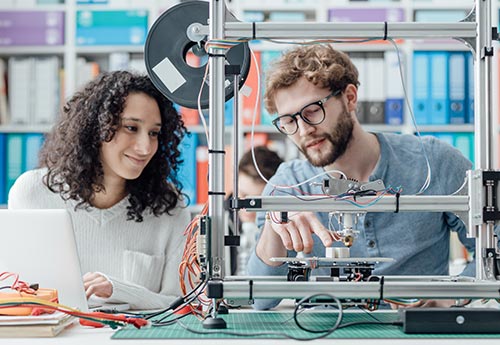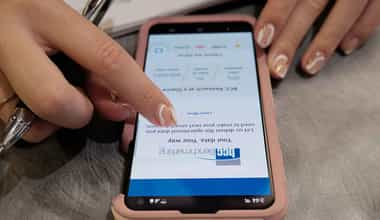
Jan 31, 2020
Blog Academic Institutions On The Future of Tech Transfer
Where is tech transfer headed in 2020 and beyond? How can tech transfer professionals prepare for emerging trends? What will it take to thrive in this field in the new decade?
We sat down with an amazing group of tech transfer experts to answer all of these questions and more.
Our lineup includes:
BCC: How do you think tech transfer will evolve in the next decade? What can tech transfer professionals expect?
Megan: We will see standardization. Events like AUTM conferences allow professionals to connect with others. Trying to get local universities like UNC, Duke and NC State to interface can be challenging. Events like AUTM provide an organic, natural avenue to come together. Those opportunities allow a real “meeting of the minds” to test processes and outcomes. Methodologies that have worked will rise to the top and will be readily adopted.
Ken: Ten years ago, the profession was to collect disclosures and file IP. Our mission was to manage the IP portfolio and that was all we did. Now, IP is just a component. Regarding the creation and support of startups, in the past, it was just licensing IP to startups and saying, “Good luck.” That would’ve been enough, but now it’s not enough.
Tech transfer has to support the early stages of startup—finding management, space, legal docs and helping would-be entrepreneurs become entrepreneurs.
Saara: The changes will probably be more revolutionary than we could ever imagine at this moment! I believe that the digital transformation will continue to accelerate tech transfer, as new solutions based on, for example, AI will make, for example, marketing and finding suitable licensees even easier. Some exciting products are already on the market. Blockchain has the potential to be implemented in automatic contracting and IP related interactions and transactions.
This enhanced speed in the exploitation of new technologies can have a major impact in our ability to address global challenges that urgently need solutions, such as climate change or the lack of personalized and affordable healthcare solutions for the aging population.
However, no matter how digital the field becomes, it is important to emphasize that the human factor and personal interactions will still play a key role in the identification, further development and commercialization of novel innovations even in the future.
BCC: What can tech transfer professionals do to prepare for these changes so that they thrive?
Megan: At institutions like land-grant universities, there may not be as large of a budget for tech transfer to travel and attend many industry events in agriculture. Maybe they can send delegates to other conferences in ag and tech transfer. Additionally, standardization is advantageous. That’s why AUTM is great. We need to have a universal agreement that is useful.
Ken: Prioritize the diversity of people. More and more people are coming into tech transfer with industrial and entrepreneurship experience, and there’s too much work for in-house FTEs. We must leverage everything. Students can help with startups. There are entrepreneurs who want to participate from the Board level—not have the commitment of CEO, but serve in advisory positions.
Tech Transfer Offices (TTOs) can leverage their own government, too. How can we best encourage the legislature to invest in tech transfer? We inform the government. And use software. A Professor at Carnegie Mellon, Dean Alderucci, is developing AI software for patent analysis (patent searching, writing patents). We have to employ technology to maximize our efforts.
Saara: Even though many TTOs still function according to the traditional linear stage-gate model, the tech transfer environment is evolving into an impact-driven network that collaborates in the creation and commercialization of novel business concepts at many overlapping levels and time points.
Collaborations with specialized experts and organizations as well as utilizing the possibilities of automatization, where possible, are key to keeping up with the change and creating flexibility and new opportunities in the field.
BCC: How might the metrics and missions of TTOs change in the next decade?
Megan: Regarding metrics, in 2018 Duke filed about 90 patent applications, but at a local small company in agriculture, Boragen, they filed 20. This is a large difference that reflects those in academia to publish, and companies to file. Patent filings are a metric of value in corporations, and the same may not be true for principal investigators at universities. Professors many times don’t feel incentivized to complete those patent forms. Can TTOs take that burden off of them if they’re not interested in tech transfer and corporate formation? It can be difficult for professors to see why they should put scarce resources into something that may seem of dubious value.
Regarding missions, with any other department of this nature, like athletic boosters, the goal is to bring funding into the university. With tech transfer, there’s a shift from university sense to industry sense. The questions of value are different, which moves tech transfer to be more business- or corporate-like in its attention to inventions in commercial opportunity. TTOs will be more direct in that approach.
Ken: We have to be able to track job creation. What is the economic impact of what we do? We should report the amount of investment that startups secure. What goes back to the state in tax revenue?
BCC: What would you say to tech transfer professionals who are resistant to the shifts in the coming decade?
Megan: As it refers to agriculture, I don’t think that’s an issue. We can take cues from the blueprint of human health where we saw the consolidation of big pharma. We saw small startups drop out and provide real innovation. Big pharma is great at dev, but research is hard, and is increasingly coming from outside. Now that Ag is nearing the end of its current consolidation wave, we expect to see the same thing. We will see a shift from the “not invented here” mentality toward innovation and novel research from outside big Ag. Much of that research will come from tech transfer, which is such a great opportunity for universities to capitalize on wealth of knowledge that can be funneled back to the university.
Ken: It’s not as exciting to keep your head in the sand that’s for sure, but it’s also existential issue. Seeing the TTO as a profit center is a losing proposition. Just looking at the statistics. For example, there were 8K licenses in 2017 and less than ½ of 1% licenses will produce $1M. The groups that actually are profit centers, ex. Columbia and Stanford—the bulk their profit comes from a few drugs, so you just get lucky on a few things that produce a lot of money. You can’t build a life like that.
Tech transfer is a service to the university to scale the university’s impact. We’re here to assist researchers with garnering the most impact for the fruits of their labor. We’re creating jobs and saving lives. That’s how we keep universities relevant.
Saara: Tech transfer officers are generally aiming for and motivated by successful commercialization cases, which lead to the practical implementation of the related novel technologies i.e. to the creation of positive societal and economic impact, finally. If this process can be facilitated by new digital tools, I don’t think there are many tech transfer professionals that still would like to keep their head in the sand.
BCC: What is the most exciting event or trend that occurred in the past ten years in tech transfer?
Megan: Over the last decade, tech transfer has seen a dynamic shift, which has been great for small businesses and entrepreneurs. It’s the opening up of tech transfer and making technologies more accessible and available, enabling people to talk about new ideas, create new corporate entities, as well as create more opportunity for post-docs and universities to advance their technology and scientific ideas.
We’ve seen a transformation across TTOs relative to ten years ago. All TTOs are very unique, as they’ve tried to form models that gravitate towards company formation; they’ve all done it in different ways. We’ll see that consolidate as universities see what works for them. There’s a revival and revolution to get technologies out, which is fantastic.
Ken: It happened in November 2019, when AUTM won a $16M contract to support the FLC, the Federal Laboratory Consortium—that was fantastic. AUTM members represent $60B of research and federal laboratories represent another $50B, so that pretty much doubles our research base.
Saara: The digital transformation. The commercialization of such new technologies requires thorough understanding of not only the innovations themselves, but also of the newly formed market and IP landscape.
Digitalization is also transforming the tech transfer field itself. Digital solutions play a key role in facilitating the commercialization of new scientific inventions already today. The digital technology transfer environment includes new ways to handle data and IP, as well as more efficient channels and platforms to manage collaborations and interactions with various stakeholders.

Sarah Greenberg is the Manager of Content Marketing at BCC Research. She creates our blog, social media and email content.

Do you ever struggle with what to say to a professor in an email? Writing an ema...

At this time of year, many of you are reviewing your budget and analyzing your m...

Happy Summer to our academic librarian audience! I hope you get to enjoy a bit o...

We are your trusted research partner, providing actionable insights and custom consulting across life sciences, advanced materials, and technology. Allow BCC Research to nurture your smartest business decisions today, tomorrow, and beyond.
Contact UsBCC Research provides objective, unbiased measurement and assessment of market opportunities with detailed market research reports. Our experienced industry analysts assess growth opportunities, market sizing, technologies, applications, supply chains and companies with the singular goal of helping you make informed business decisions, free of noise and hype.